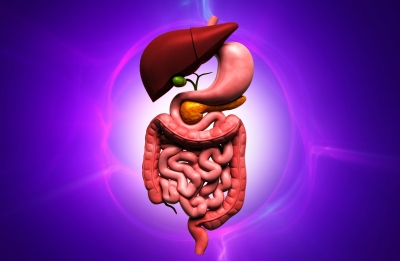Is Peanut Butter Good For Cholesterol?

According to the Texas Peanut Producers, Americans eat 3 pounds of peanut butter per person each year. The average American child consumes about 1,500 peanut butter sandwiches by the time they graduate from high school.
Since we obviously love our peanut butter, just how nutritious is it for us?
Peanut Butter Health Benefits
Here are 5 health benefits of peanut butter:
1. Suppressed hunger
While peanuts are energy dense (i.e. not low in calories) consuming peanuts as a regular part of your diet does not lead to weight gain due to a high satiety value (i.e. reduced feelings of hunger).
2. Reduced risk for heart disease
Including peanuts in your diet leads to reduced cardiovascular disease risk due to peanuts promoting lower triglyceride levels and increased serum magnesium levels.
3. Heart healthy fats
About 50% of the fat contained in peanuts is a heart-healthy monounsaturated fat. This is the same type of fat found in olive oil. Studies have found monounsaturated fats improve cholesterol levels and reduce heart disease risk.
4. Lower colon cancer risk
Studies have connected frequent peanut intake to reduce colorectal cancer risk.
5. Reduces risk of diabetes
Research has found replacing carbohydrates with two ounces of nuts, such as peanuts, every day improves blood glucose control and blood lipids in individuals with type 2 diabetes.
Selecting a Healthy Peanut Butter
Read the food label. Select peanut butter containing no hydrogenated fats and minimal added sugar. Check the ingredient list and choose a peanut butter with only peanuts and salt listed. This means no additives and a rich peanut flavor.
Be sure to refrigerate natural peanut butter. The oils may become rancid if stored at room temperature. Try refrigerating the peanut butter upside down so the oils and solids remix and less stirring is required.
Consuming peanuts as a regular part of your diet is just one step you can take to promote lower cholesterol levels. Want more ideas? Access my free e-course here!
P.S. Did you know it takes 850 peanuts to make one 18oz. jar of peanut butter?
All the best,
Lisa Nelson RD
Health Pro for HealthCentral
LDL-P: How to lower small, dense LDL particles

The development of heart disease is associated with many risk factors. LDL cholesterol level is often used to determine if preventative treatment is needed, such as medication to lower levels in an effort to prevent heart disease.
However, research indicates LDL cholesterol alone is not necessarily a good determinant of risk. LDL particles vary in their content, size, and density. Not all LDL particles impact heart disease risk in the same way.
Light, fluffy versus small, dense LDL particles
LDL particles come in two main sizes: Large, fluffy particles and small, dense particles.
I had these particles explained to me once by picturing dump trucks on a highway. This helped me visualize the role of these different particles. Hopefully it’ll help you…
Picture the large, fluffy particles to be five large trucks transporting a full load on the highway. Now picture small, dense particles to equal twenty small, trucks with a full load on the highway. It takes twenty small trucks to carry the same load five large trucks can transport.
The more “trucks” (ie particles) in your system, the greater your heart disease risk.
Hence the reason it is beneficial to have large, fluffy particles (ie trucks that can carry a lot in fewer loads) versus small, dense particles (ie more trucks to carry the same load).
Continue reading
Is it now considered okay to eat saturated fat from butter and tropical oils?
![saturated-fat[1]](http://www.lisanelsonrd.com/wp-content/uploads/2016/07/saturated-fat1.jpg) It’s no wonder so many of us are confused about healthy eating. Even the nation’s dietary experts keep changing their mind about what we should eat and what we should avoid. We asked USC School of Pharmacy Research Professor Roger Clemens to help remove some of the confusion surrounding healthy fats.
It’s no wonder so many of us are confused about healthy eating. Even the nation’s dietary experts keep changing their mind about what we should eat and what we should avoid. We asked USC School of Pharmacy Research Professor Roger Clemens to help remove some of the confusion surrounding healthy fats.
Q: What are the latest dietary guidelines regarding fat and cholesterol?
Dr. Clemens: The 2015 Dietary Guidelines Advisory Committee Scientific Report states that cholesterol is no longer a nutrient of concern. The available evidence shows no appreciable relationship between consumption of dietary cholesterol and serum cholesterol. This is consistent with the conclusion of the American Heart Association and American College of Cardiology report.
Q: Can you explain this change in thinking over the past several decades?
Dr. Clemens: Nutritional science is dynamic. In the 1980s, the Dietary Guidelines suggested consumers avoid too much total fat and saturated fat. Over time, total fat guidelines have been upwardly adjusted with the 2010 Guidelines suggesting diets with up 35 percent of daily calories from fat. The 2015 executive summary suggests no upper limit for total fat consumption. Saturated fat guidelines have similarly evolved and now suggest including up to 10 percent in a healthy diet, and replacing saturated fat with polyunsaturated and mono-unsaturated fat. This thinking may still be changing, however. Current evidence does not clearly support cardiovascular guidelines that encourage high consumption of polyunsaturated fatty acids and low consumption of total saturated fats.
Continue reading
What Is a Healthy Cholesterol Level? VIDEO with Dr. Sinatra
Dr. Sinatra is a well-known cardiologist focused on providing his clients with useful cholesterol tips in order to live a healthier life.
Can Probiotics Lower Cholesterol Levels?

Understanding gut bacteria and how they impact metabolism, heart disease, diabetes, and obesity may provide new treatment options.
Trillions of bacteria and other microbes live within our gut. This microbiome is necessary to neutralize by-products of digestion, decrease toxins and carcinogens, and inhibit the growth of unhealthy bacteria and yeast. The microbiome also aids in the absorption of nutrients, supports the digestive process, and produces vitamins B and K.
Research published in the journal Circulation Research found the microbiome may also play a role in body mass index (BMI) and blood lipid levels (i.e. HDL and triglycerides).
Continue reading
Cholesterol: “Not a Nutrient of Concern”
 The Dietary Guidelines for Americans are updated every five years by the Department of Agriculture (USDA) and the Department of Health and Human Services (HHS). The first edition was released in 1980 with the 7th edition released in 2010 (Dietary Guidelines for Americans). This means the 8th edition will be released this year.
The Dietary Guidelines for Americans are updated every five years by the Department of Agriculture (USDA) and the Department of Health and Human Services (HHS). The first edition was released in 1980 with the 7th edition released in 2010 (Dietary Guidelines for Americans). This means the 8th edition will be released this year.
There is a Dietary Guidelines Advisory Committee (DGAC) consisting of recognized experts in nutrition and public health. This committee reviews the latest research and provides the USDA and HHS Secretaries with evidence-based recommendations.
On February 19, 2015, the DGAC released its recommendations — the Advisory Report.
In the report, the DGAC stated cholesterol is not a nutrient of concern for over consumption.
This would mean eliminating the 2010 guideline recommending cholesterol intake be limited to 300 mg per day or less. The average American cholesterol intake is 340 mg daily.
This recommendation is consistent with new guidelines from the American Heart Association and American College of Cardiology, but has still caused significant debate on the impact if dietary cholesterol guidelines are removed.
What are some concerns being debated?
Continue reading



